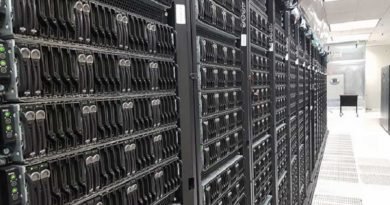Types of Condensing Steam Boilers
What is a condensing steam boiler? This article explains the differences between oil-fired condensing boilers and gas-fired boilers, including the differences between biomass pellet and gas-fired models. It will also provide information on the differences between each of the four types of condensing steam boilers. In this article, we will define each type and give you a brief description of each.
Definition of condensing steam boiler
A condensing steam boiler is a type of heat-recovery device that uses hot water to produce steam. The efficiency of such a system is maximized by reducing the hot water supply temperature. This allows the boiler to use hot water from various sources, including domestic water heating and snow-melt systems. These boilers typically achieve an efficiency of 90% or more. In some cases, they even use less energy than non-condensing boilers.
The difference between a non-condensing and a condensing steam boiler lies in the amount of water vapor that is condensed during the combustion process. A condensing steam boiler, on the other hand, has an efficiency rating that is above 88%. A condensing steam boiler is able to operate at high efficiency because it utilizes the latent heat produced during the condensation process to heat the water.
The condenser and its heat exchangers are highly effective in the heat transfer process. Both methods have their own benefits and advantages. The condenser is a device that allows steam to travel downward to contact cooling tubes. The steam passes through the tubes in a circular manner and loses heat as it passes through them. A condensate removal pump is located in the center of the boiler and extracts the condensate. Below is describing difference types of Condensing Steam Boilers
Oil – Fired condensing boiler
An oil-fired condensing boiler is equipped with an advanced internal combustion three-pass structure. It is designed to maximize heat utilization efficiency while decreasing the temperature of exhaust smoke.
The flame from the burner atomizes oil fuel, which flows into a corrugated furnace. High-temperature flue gases then flow along with the furnace, passing through the reversing chamber, first tube bundle, and second tube bundle. Finally, the exhaust gas is vented to the outside.
Unlike atmospheric boilers, the final exhaust from an oil-fired condensing boiler is slightly acidic. For this reason, appropriate materials must be used. In high-temperature areas, stainless steel and aluminum alloys are common.
In low-temperature regions, plastics are used. In addition, condensate drainage systems must be installed. This is the only difference between an oil-fired condensing boiler and a non-condensing one.
Another major difference between an oil-fired condensing boiler and a conventional one is its fuel. An oil-fired condensing boiler uses oil as the primary fuel and is also known as an oil-fired, direct-fired, or single-effect generator.
It is generally smaller than a conventional boiler and has a limited recovery rate. In addition, it is not as efficient at high heat output. However, it is an excellent option for small-scale heating.
Gas-Fired condensing boiler
Gas-Fired condensing or hot water boilers are excellent choices for home heating. They are high-efficiency and can significantly reduce home heating bills. These appliances feature a combustion chamber and a heat-exchanger that helps to cool the evolved gas. The condensed gas is cooled to approximately 50 degrees Celsius. The resulting condensate is collected and used for heating or cooling.
Fire tube boilers are very common and can heat large amounts of water quickly. These boilers may take several hours to reach proper pressure, which can be inconvenient in certain industries. Because fire tube boilers use returned condensate as feedwater, they require nonproductive fire-up time. The feedwater for fire-tube boilers typically contains minerals from the returned steam condensate. Water treatment is essential to prevent mineral buildup.
The best way to choose a gas-fired boiler is to talk to a heating expert. The company will be able to tell you all of the benefits and features of this type of boiler. You may even be surprised to learn that a gas-fired boiler can be as little as ten tons. Alternatively, you could purchase a gas-fired boiler that is as large as 25 tons.
Biomass pellet condensing boiler
Among the numerous benefits of a biomass-powered steam boiler, the most notable benefit is that it is highly efficient and reduces emissions. Moreover, the biomass boiler’s unique design features automatic cleaning, a secondary cyclone burnout chamber, and a larger convection surface area.
The pellets themselves are the most economical and versatile fuel for this boiler. It is a versatile unit that can be used in numerous industries and can offer excellent returns on investment.
There are different types of biomass fuels that can be used in a biomass boiler. Some of these fuels include wood chips, by-products of the wood industry, and wood waste. Some even accept non-traditional types of biomass.
These boilers have advanced features, including automatic feeding, lighting, ash and soot extraction, and adjustable power modulation. You can choose the type of biomass fuel that best suits your needs by exploring the options available.
Because biomass is cheaper than oil or gas, it can be cheaper than gas. However, you need to consider the size of your home when purchasing biomass fuel for your boiler. Generally, biomass boilers are larger than their gas counterparts.
Their dimensions vary according to the model. A standard biomass boiler measures 1540 x 1030 x 1120. The size and shape will depend on your home heating requirements.
Double Fuel Commercial condensing
To compare the fuel efficiency of Double Fuel and Single Fuel Commercial condensing steam boilers, the calculation parameters used in the calculation were assumed to be identical. For example, the 80% efficiency is assumed, as well as the time constant of a minute, and a damper delay time of.
Then, the initial and steady-state cooling losses were calculated using a computer programme. The fuel savings were computed as a function of the dimensionless firing time, the fraction of a cycle that a burner fires.
The MFC series heat exchanger has dual return connections for optimal application flexibility. Its dual return connections also allow for seasonal efficiency gains of up to 10%. During shoulder months, the boiler’s water temperature can be re-set for condensing.
These features make operating this boiler a much more efficient choice. The boiler is also compatible with natural gas, propane and #2 fuel oil. Its BL controller makes it simple to control the steam pressure, water conductivity, and time to blowdown.
Besides the boiler’s high efficiency, double fuel commercial condensing steam boilers also have high dew point temperatures. This means that by closing the condensing window, you’d be limiting the amount of energy you can get from the fuel.
The dew point temperature of steam is affected by the excess air. So, if you’re not satisfied with the temperature of the steam, consider a Triple Fuel commercial condensing steam boiler instead.
High-Efficiency condensing boiler
A high-efficiency steam boiler is a new type of gas-fired steam boiler that uses water vapor to produce hot water. This process is more efficient than traditional steam boilers because they reclaim most of the exhaust gases that result from the combustion of fuel.
The water vapor that results from the combustion of fuel helps protect the environment. Its unique features include a fully-wet back design and a thread smoke tube structure.
Another benefit of using a condensing boiler is that it can burn natural gas at an efficiency of 90-92%. This can save a significant amount of fuel while ensuring the comfort of building occupants. Furthermore, this type of boiler is very durable, ensuring years of trouble-free operation.
Condensing steam boilers are more energy efficient than conventional steam boilers and are capable of meeting the requirements of the Building Services Engineers (BSE) and are often more cost-effective.
A condensing steam boiler offers many other advantages. It reduces carbon emissions by using less fuel and emits fewer harmful gases than conventional boilers. Its large heat exchangers also condense waste water vapors to produce heat.
The steam produced by these boilers is then used to heat the water and provide further heating for the home. Its efficiency is higher than 90%, and the savings can be very substantial on the utility bill.
Customized condensing boiler
A customized condensing steam boiler has many advantages over non-condensing boilers. They reduce energy consumption and utility bills while still generating hot water and steam for distribution via baseboards, radiators, and in-floor radiant systems.
This heating system recovers the heat that would otherwise be wasted in the flue gas. With the condensing steam boiler, that waste is recovered and recycled, resulting in greater energy efficiency.
The Cleaver-Brooks ClearFire(r)-LC steam boiler integrates a leading burner, heat exchanger, and control technology. The Cleaver-Brooks ClearFire(r)-LC offers high efficiency, ultra-low emissions, and optimum turndown. Its high-efficiency, energy-efficient design, and advanced controls allow you to program and regulate the boiler without compromising safety or performance.
Programmability allows you to set the boiler to limit firing rates based on the number of time intervals and steps in the control program. You can even program it to lower the temperature of the space during the nighttime. This can reduce your energy bills and maximize your comfort.
You can even customize the boiler by choosing the features that are most suitable for your business. Once you’ve made your decision, you can get a customized condensing steam boiler.




